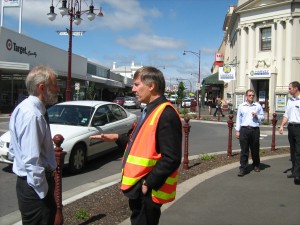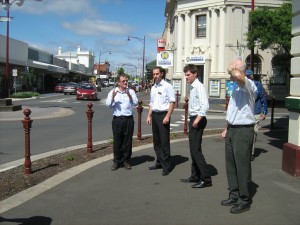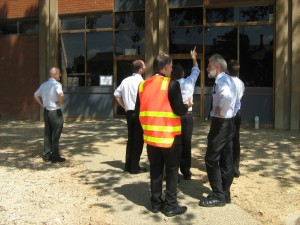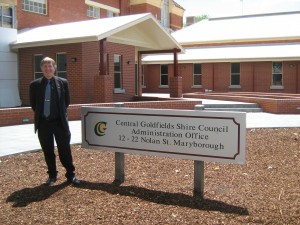IPWEAvic Board member and General Manager Technical Services at Central Goldfields Shire Council, David Sutcliffe, reports on the issues faced by his council as a result of the recent storm damage and suggests some solutions which may be considered by central government.
In the case of Central Goldfields Shire, we have already spent around one million dollars since 4th September on emergency flood damage repairs, which is essentially repairing bridges and getting basic access to properties. We are still assessing damage from the recent storms over the last couple of weeks but essentially a lot of the work undertaken in the northern part of our shire will have to be redone.
The estimated cost of the damage from the 4th September was $4.5 million. We estimate there has been a further $1.5 Million in damage in recent weeks. The repairs are going to take many months to complete.
Issue 1 – Cash flow
Our shire is unable to carry any significant debt for an extended time and the current debt needs to be cleared as soon as possible. We are fortunate that rate payments have recently come in and we are only half way through the financial year, providing temporary funds to cover current outlays.
Our council is unable to carry further debt and will have to cease repair works by Christmas (as current commitments to contractors can be finalised) until advance funds for emergency damage repairs can be obtained.
I understand that other councils in the region have held off undertaking repairs until they are allocated funds from the state government.
Issue 2 – Timing of works
With the harvest due we are fearful that farmers will be unable to accessing their crops to harvest and unable to truck out their grain over the damaged roads and bridges.
The ideal construction time is from now until May 2011. If councils have to wait several months for finance to be put in place, it will put construction back into winter which is unlikely to be practical.
Issue 3 – Procurement
Our council has made good progress given our capacity and the work is many times bigger than our normal annual works program. There has been a lead in gearing up our supervision and bringing in our contractors although we commenced repairs immediately. Our council was fortunate to already have a civil contractor plant hire panel contract in place which meant we were able to immediately engage contractors.
The shear size of the repair damage has however used all of our local contractors. We need to draw in new contractors to enable to repairs to be completed within 12 months. Consequently we have commenced the procurement process to obtain more contractors. This process will take up to two months to complete. There is likely to be a further lead time from appointing new contractors to getting them started.
The local Government Act Section 185 (5) provides a provision to simplify procurement for emergencies. Given the work will take a year or so to complete councils will not be prepared to class the work as emergency. However the Minister could give a direction to councils that they may consider repair work falls within the definition of emergency for the purposes of Section 186 (5) of the Local Government Act and this would assist many councils that have not yet put their contractor procurement processes in place.
Conclusion
To assist Local Government to effect repairs quickly you can:
- Provide immediate cash advances (say 30% of estimated damage) and ongoing cash flow assistance for councils.
- Speed up the funding processes to ensure repair work can continue over the summer period and priority can be given to farmers accessing their crops.
- Minister to declare that storm damage repair work is considered emergency works for the purposes of the Local Government Act Section 186 (5) to free up the procurement processes.
- Simplify the claim application processes to ensure resources are put into repairs rather than preparing extensive claim documentation.
Comments to this approach are welcome and can be directed to David on Phone: 03 54610 602 or emailed to vic@ipwea.org.au
Bookmark to:









